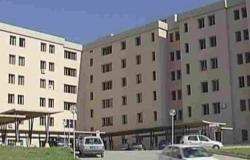“Inaccuracies and no reference to positive aspects confirmed by the data”
Regarding the article entitled “Liguria, precarious work increases. We are the poorest in the north west” published on April 10th on page 13 of “Il Secolo XIX”, the leaders of the Liguria Region yesterday clarified the following.

“The article, reporting the considerations of the general secretary of the CGIL, presents some inaccuracies and above all provides a picture of the Ligurian labor market which does not completely correspond to reality. Only the critical issues are highlighted, avoiding mentioning the positive aspects, even if they exist and are confirmed by the data.
The topics that deserve further study have been divided into three groups. 

Maurizio Calà Cgil1. SOURCES
The sources involved but not cited in the article have been verified. Cgil mainly relies on Rfl data (Istat Workforce Survey) 2022 and 2023 but other sources are also used (e.g. Eu-Silc). However, it was not possible to trace the source of the data on the vouchers.
2. POSITIVE DATA
No positive data were mentioned such as:
• NEET: – 23.3% (-6,862 units)
• Permanent contracts: + 2.4%
• Female employment: +5.4% (14,405 units)
• The inactive: -3.1%
• Unemployment: -10.8% (-4,974 units)


Furthermore, claiming that 87.5% of new hires “are part of some form of precarious employment” is without justification, as the figure would be obtained by subtracting the number of new hires with permanent contracts from the total number of new hires. This would mean that all new self-employed work is considered precarious. It is a real fact that the use of VAT numbers to disguise employee work is increasingly frequent, but taking it for granted that 100% of new VAT numbers derive from these contractual forms appears completely baseless.


Lastly, the comparison with the data from the North-West appears decontextualized and ignores the profound differences between the economies of regions such as Lombardy and Piedmont, which benefit from the enormous industrial activities of the Po Valley, and the economy of Liguria, based mainly on tourism.
3. COMPARISON WITH 2015
It was not possible to take into consideration the years from 2015 to 2017 because following the changes introduced by EU Regulation 2019/1700, the Fdl sample survey was modified in order to harmonize the concepts of people and families. More detailed and binding requirements have been introduced which in particular modify the concept of “employed”. Istat has created a reconstructed series of data, but for regional detail the series are only available from 2018.


In particular:
• Employment aged 15-89 in Liguria in 2023 grew by 5.2% compared to 2018; higher increase than the North-West (1.8%) and Italy (2.7%) figures;
• The percentage for Liguria is also higher with regard to employed employees which grew by 7.6% (Italy 4.8%; North-West 3.6%);
• Self-employed workers fell by -1.5% but even in this case the figure is much lower compared to Italy and the North-West (-4.3% and -4.6% respectively);
• The growth of permanent employees in Liguria in the 2023/2018 comparison is equal to 7.7%. The growth is higher than the figure for Italy (6%) and the North-West (5.7%).
• Also with regards to the employment of fixed-term employees, the growth in Liguria is equal to 7%; given that it exceeds the percentage variations recorded in Italy and the North-West, both with a negative sign (-1% and -10% respectively).
In reference to the number of permanent and fixed-term contracts, the Mandatory Communications confirm the positive trend recorded by the RFL in the period 2018-2023″. Marcello Di Meglio
Tags: Employment work clarifications Liguria Region











